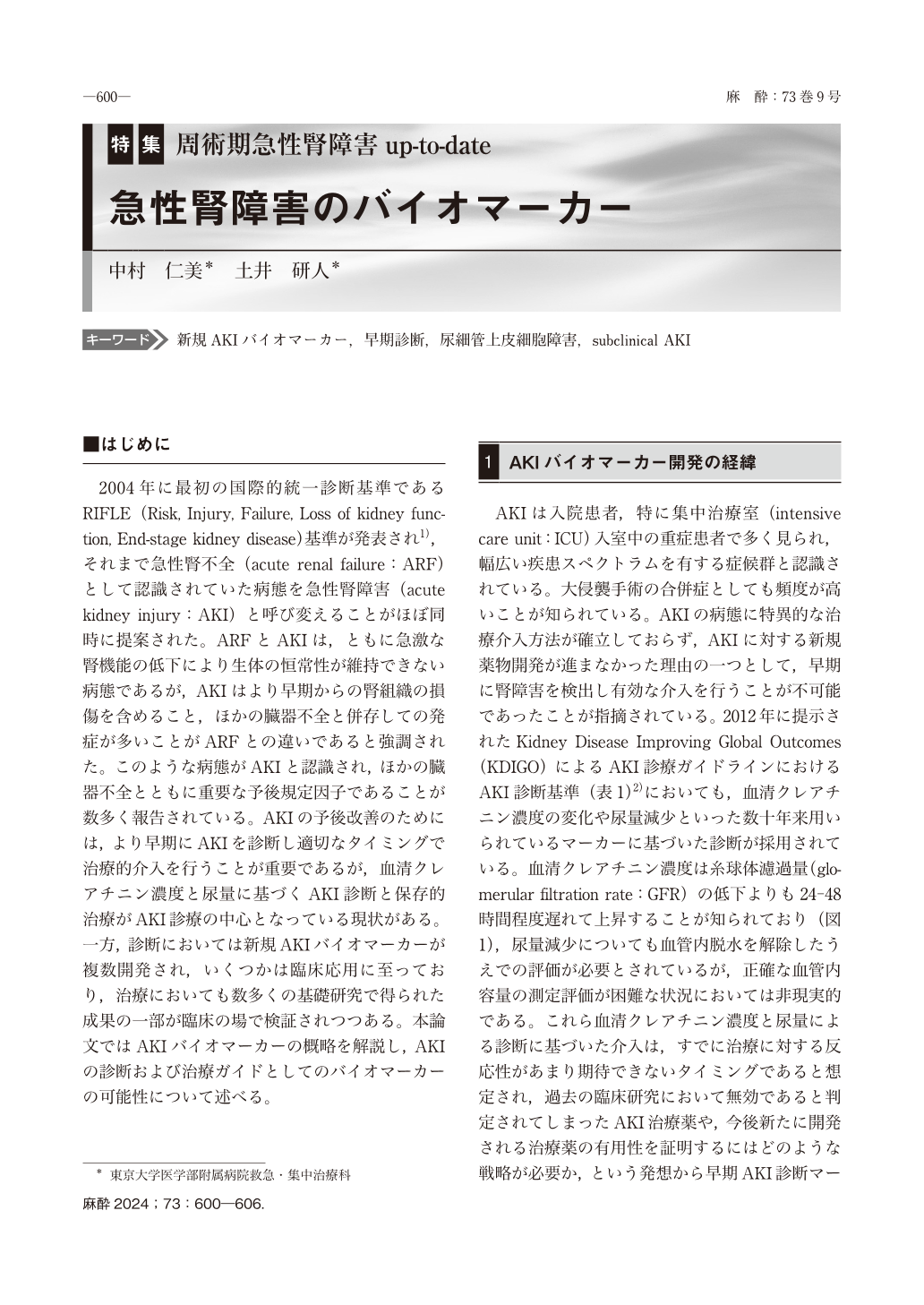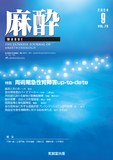Japanese
English
- 有料閲覧
- Abstract 文献概要
- 1ページ目 Look Inside
- 参考文献 Reference
はじめに
2004年に最初の国際的統一診断基準であるRIFLE(Risk, Injury, Failure, Loss of kidney function, End-stage kidney disease)基準が発表され1),それまで急性腎不全(acute renal failure:ARF)として認識されていた病態を急性腎障害(acute kidney injury:AKI)と呼び変えることがほぼ同時に提案された。ARFとAKIは,ともに急激な腎機能の低下により生体の恒常性が維持できない病態であるが,AKIはより早期からの腎組織の損傷を含めること,ほかの臓器不全と併存しての発症が多いことがARFとの違いであると強調された。このような病態がAKIと認識され,ほかの臓器不全とともに重要な予後規定因子であることが数多く報告されている。AKIの予後改善のためには,より早期にAKIを診断し適切なタイミングで治療的介入を行うことが重要であるが,血清クレアチニン濃度と尿量に基づくAKI診断と保存的治療がAKI診療の中心となっている現状がある。一方,診断においては新規AKIバイオマーカーが複数開発され,いくつかは臨床応用に至っており,治療においても数多くの基礎研究で得られた成果の一部が臨床の場で検証されつつある。本論文ではAKIバイオマーカーの概略を解説し,AKIの診断および治療ガイドとしてのバイオマーカーの可能性について述べる。
The first internationally standardized diagnostic criteria for acute kidney injury were published in 2004, and it was proposed that the condition previously recognized as acute renal failure(ARF)be renamed acute kidney injury(AKI). Both ARF and AKI are conditions in which the body’s homeostasis cannot be maintained due to a rapid deterioration of renal function. However, it should be noted that AKI involves damage to renal tissue from an earlier stage compared to ARF and often occurs in association with other organs’ failure. Although it is important to diagnose AKI at an earlier stage and to provide therapeutic intervention at the appropriate time to improve the prognosis of AKI, a diagnosis of AKI based on the patient’s serum creatinine concentration and urine output is not sufficient. Moreover, clinical trials based on these two parameters failed to develop any new therapeutics against AKI. Several new AKI biomarkers reflecting tubular epithelial cell defect have been developed for diagnosis, and some of them have been applied to clinical practice. These biomarkers are expected to be incorporated with patient enrollment in clinical trials.

Copyright © 2024 KOKUSEIDO CO., LTD. All Rights Reserved.


